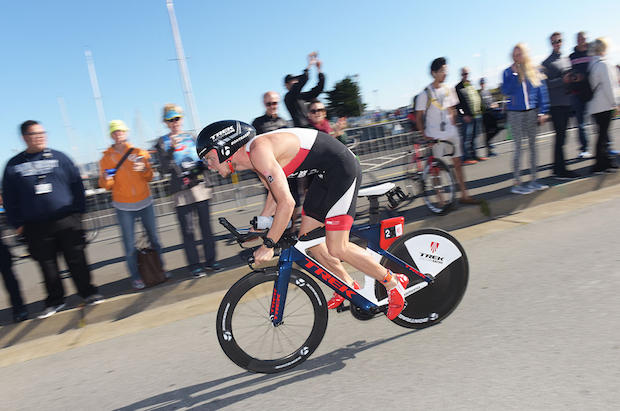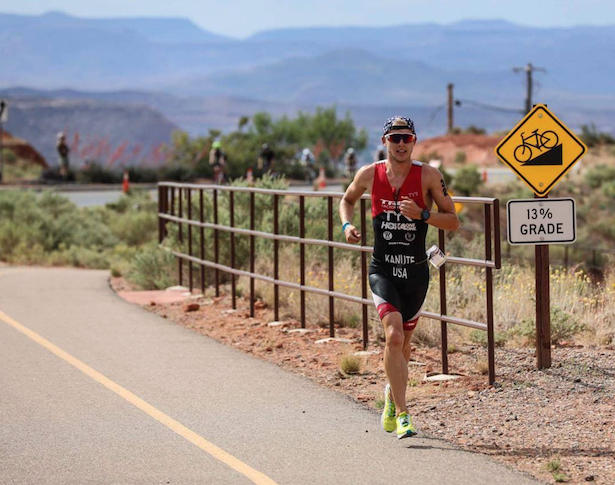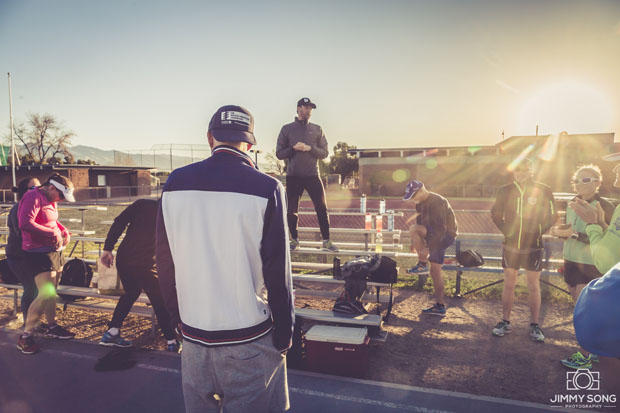Inside Ben Kanute’s Texas Shootout
Only seven men have bested American Olympian Ben Kanute in four career races over the 70.3 distance. On that list a star-studded cast including Alistair Brownlee, Javier Gomez, Lionel Sanders, Andy Potts, Sebastian Kienle, Tim Don and Taylor Reid. However, Sunday marked the Chicago native's first career win at the long distance format.

Ben Kanute earned his first career IRONMAN 70.3 win this past weekend in Galveston, Texas. Hard to believe it is the first 70.3 win for a guy who finished second at the 70.3 World Championships just a few months ago, after leading for the majority of the race. But the truth is, Ben is still new and young to the sport, at anything over Olympic distance. At 25, he’s already got an Olympic Games under his belt, and there is still a lot in front of him in the sport. His only other races were a rookie experience at 70.3 Puerto Rico in March 2017, and then 70.3 North American Championships in St. George, where he had the green light to test himself. He surprised most onlookers at the time with his fifth place finish against a stellar field, and was the only American in the top 10.

Ben has made it clear, his goals for the near future are the Tokyo 2020 Olympic Games, especially the Mixed Relay, where his skill set helped the US win the ITU World Championship title in 2016. In 2018, the Olympic Qualification Period begins in May, so he has had to continue to balance the 70.3 race schedule with his goals for the future. Texas was the only 70.3 race on his calendar for 2018 other than 70.3 Worlds in South Africa, on September 1st.
Ben won this race on a low volume, high quality approach to training.
Here are his hours of training four (4) weeks prior to race week in Texas:
Week of Training Hours
March 5th 14:40
March 12th 17:05
March 19th 13:50
March 26th 18:05
Ben's bigger races are still to come this season, so he came into this undertrained for 70.3 specific fitness, but we had a good idea of what he needed to do to win. And yes, these times include everything from swim to bike and run, as well as strength. When quality is high, volume must be low. I trusted his past training would provide what he needed in terms of strength to accomplish his goals.
Here is a load chart to help show his peak 120 minute bike power outputs of the past 12 months:

It is easy to see that of Ben’s top five 120 min power outputs in the last 12 months, 4 of them were in 2017, either in Chattanooga at 70.3 Worlds, 70.3 St. George, and in the build up to both of those. It became clear he didn’t need to focus on that distance in the early part of the season and still have success.
So what did his “low-mileage” performance look like? Here’s his bike power file as a power duration curve:

It is clear he was smart in his pacing, as his power values don’t change much as duration increases. And his overall power file shows a clear steady, pacing.
If you are reading this, you might be wondering what Ben’s threshold watts, or Critical Power, are. Let me destroy the suspense and tell you that at this point in the year Ben’s FTP is 380 watts. It is basically the same he had heading into Chattanooga, but his ability to hold his watts close to FTP is not as good as it was then. I expect that will change, both in FTP and his ability to hold closer to FTP.

So, what was Ben’s strategy? It was fairly simple. His goal was to have a lead on the top runners by the end of the bike, and just do what was necessary to win. He knew when he hit mile 5 of the run and had a four minute lead on Weiss, that it would require Weiss to run 30 seconds per mile faster in order to catch him by the finish. So, as long as he could maintain sub-6 minute per mile pace, that likely wouldn't happen, and if Weiss got close he could see it because of the out and backs on the course, and still counter with a surge. Otherwise he was under orders to hold back and keep the recovery requirements low, so he could not lose many days in order to prepare for the upcoming WTS Bermuda at the end of the month.

One of the benefits Ben had which we did not expect was his transition skill, relative to the competition. Here is a comparison of his transitions with the other top 5 athletes:
Athlete T1 T2 Total & Compared
Ben Kanute 1:21 1:04 2:25
Michael Weiss 2:02 1:44 +1:21
Andrew Starykowicz 1:33 1:33 +:41
Matt Hanson 1:37 2:20 +1:32
Paul Matthews 1:08 1:20 +:03
Being bigger than most 70.3 athletes, Ben was likely able to handle the colder temperatures better than his fellow competitors, allowing for him to move through transition faster.

Ben’s run was the biggest x-factor and the biggest surprise of the race. We knew he had a good run in him, but we did not want to express it fully if not needed, just enough to get the win and move on. After all, he has WTS Bermuda in a few weeks which means he will need to be ready to run fast given the nature of ITU races.
Ben ran a smart, intelligently paced half-marathon. He had to get past Starykowicz, then hold his position based on how the guys behind him were running. He made his move early, then determined what was happening behind him. He also was under restriction to NOT run over 340 watts in the first few miles. Here is his run power file:

as well as his run pace file:
Ben’s next 70.3 will be at the World Championships in South Africa, but he will line up again in shorter non-draft events in the meantime, including Escape From Alcatraz and New York City Triathlon.
Jim Vance is the personal coach of Ben Kanute, and author of Triathlon 2.0, and Run With Power. His website is CoachVance.com
Ben is currently hosting an Ask Me Anything thread on the ST Forum.





Start the discussion at slowtwitch.northend.network